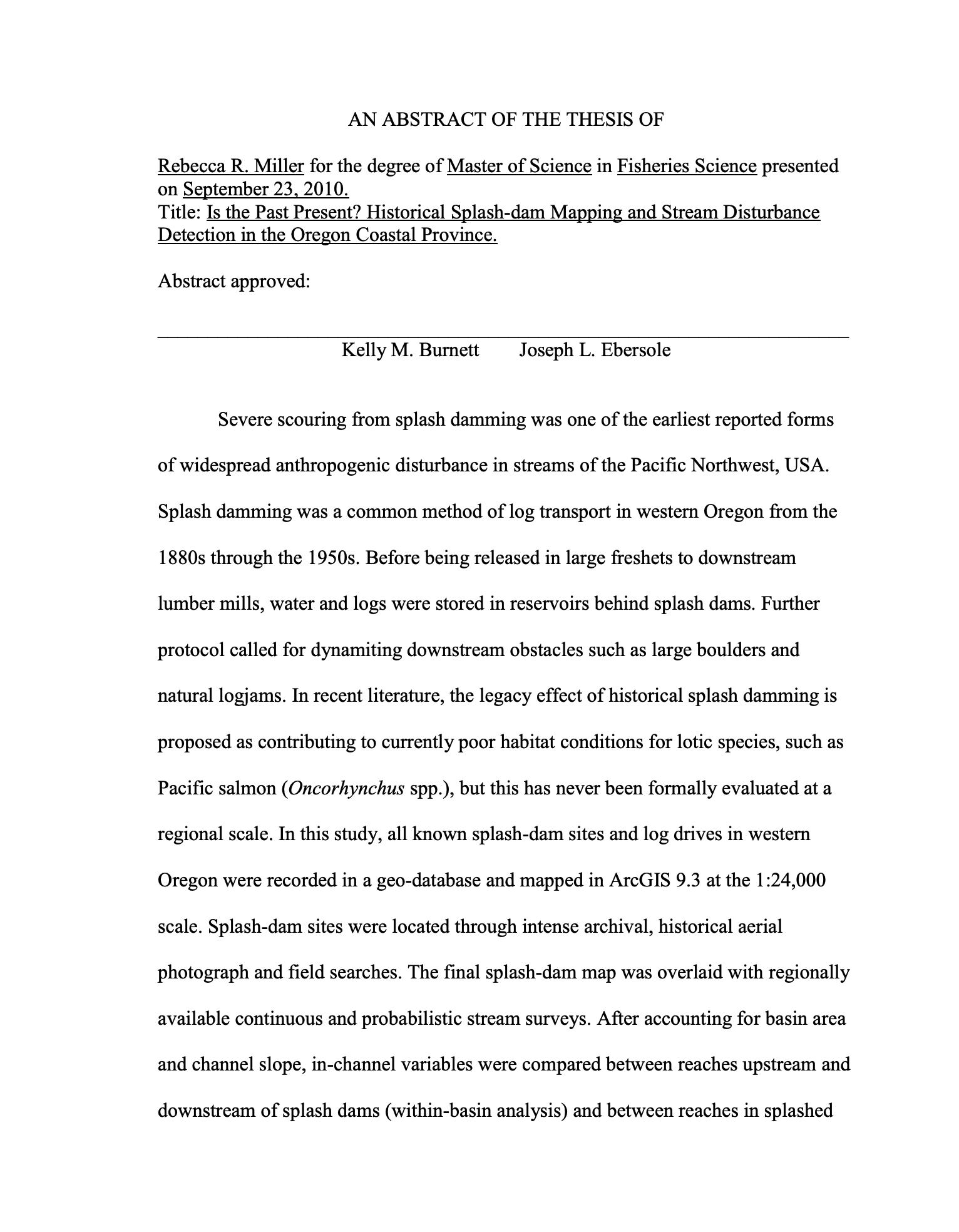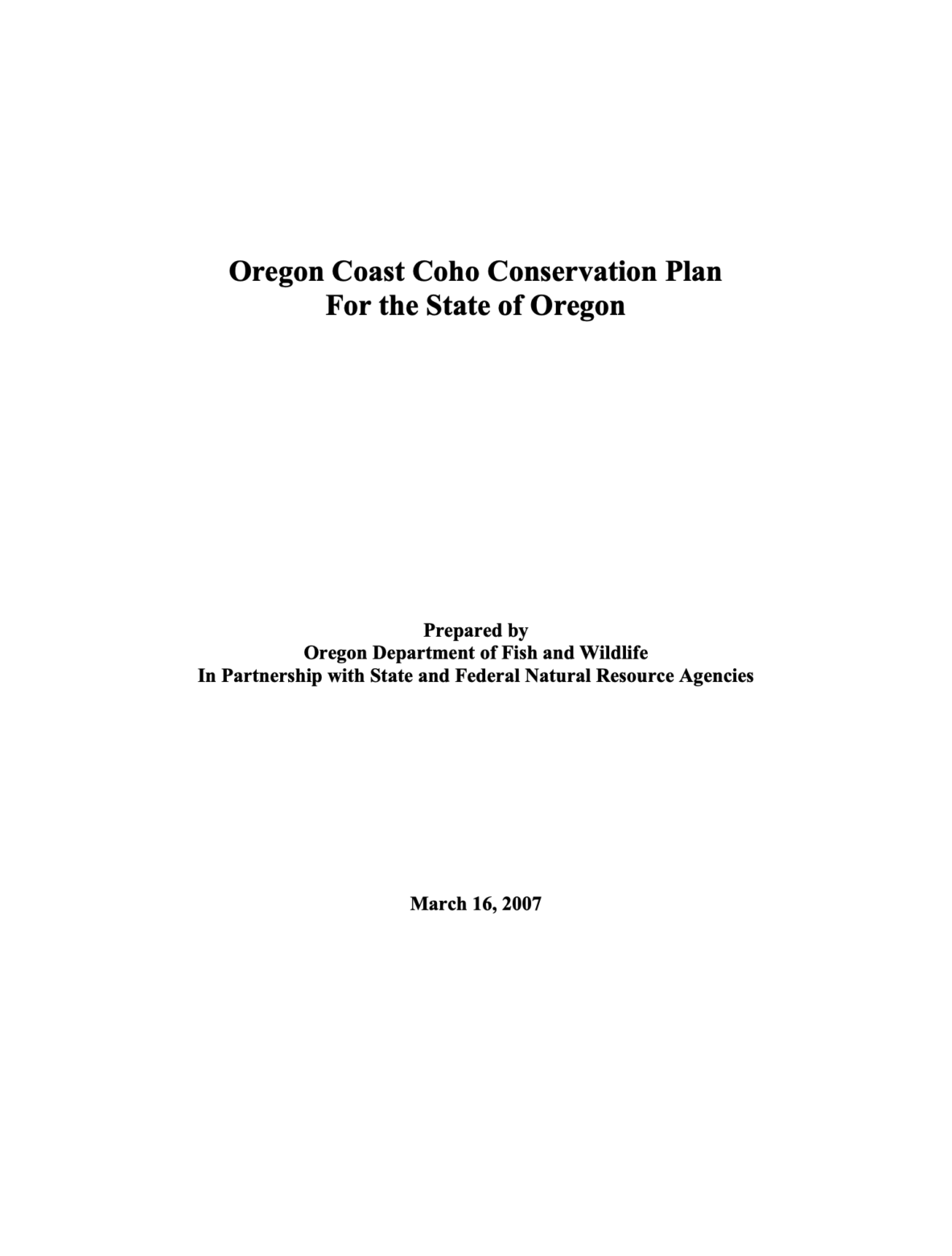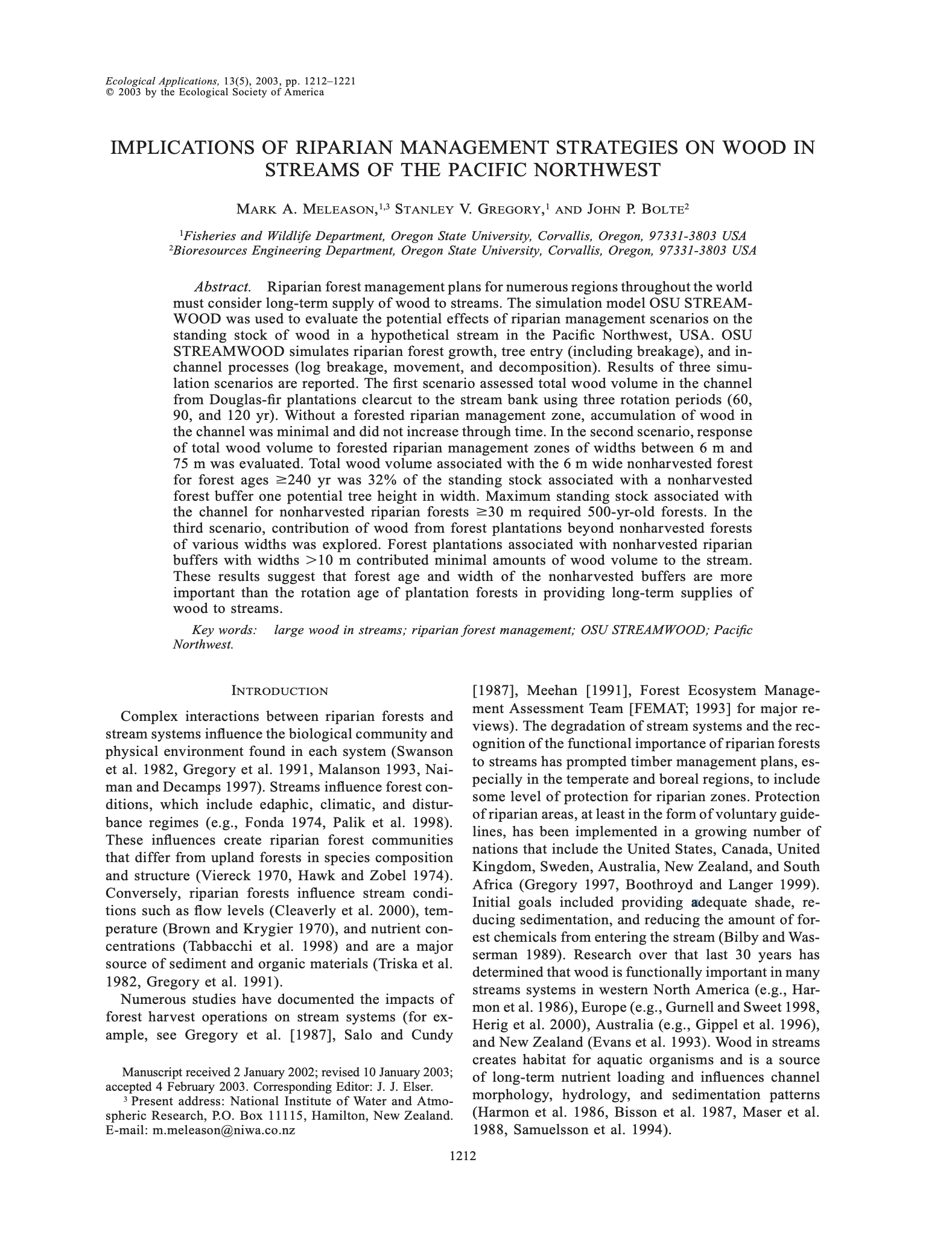Historical Splash-dam Mapping & Stream Disturbance Detection in the Oregon Coastal Province (Miller, 2010)
admin2022-06-28T13:41:53+00:00Severe scouring from splash damming was one of the earliest reported forms of widespread anthropogenic disturbance in streams of the Pacific Northwest, USA. Splash damming was a common method of log transport in western Oregon from the 1880s through the 1950s. Before being released in large freshets to downstream lumber mills, water and logs were stored in reservoirs behind splash dams. Further protocol called for dynamiting downstream obstacles such as large boulders and natural logjams. In recent literature, the legacy effect of historical splash damming is proposed as contributing to currently poor habitat conditions for lotic species, such as [...]



